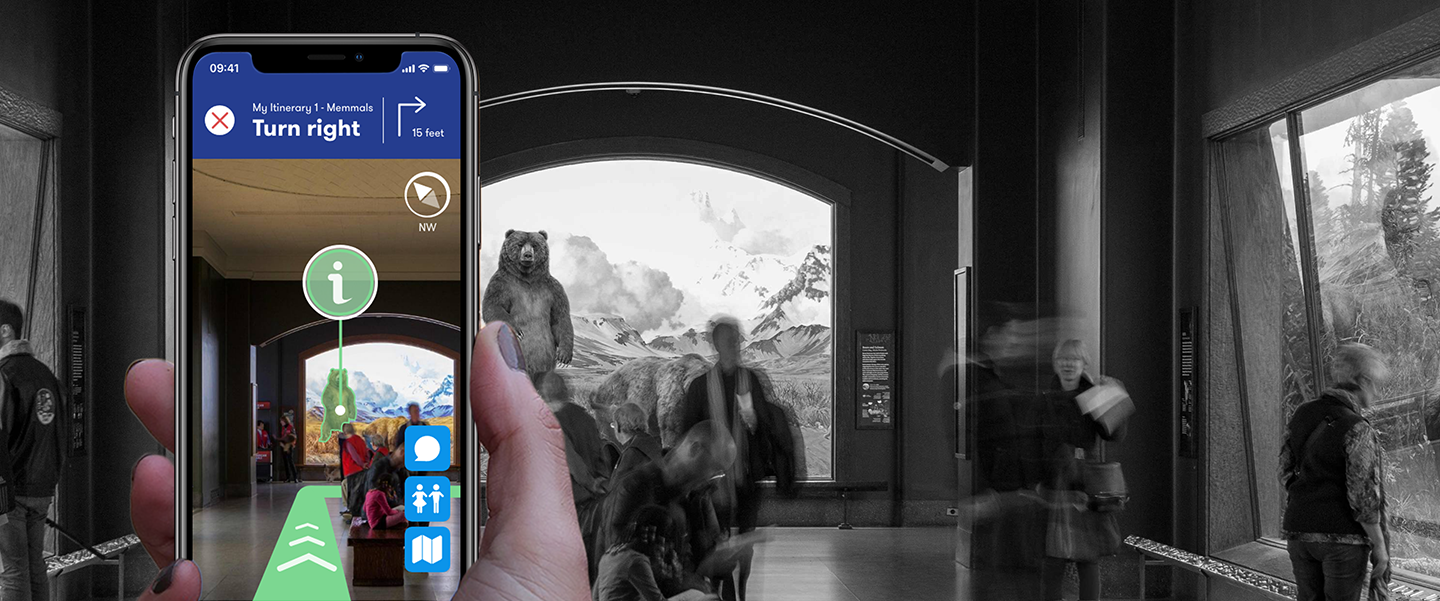The basic idea of “gamification” is the use of game elements in a non-gaming environment. The designer uses the elementary structure of video games, but out of the context of an actual video game. Duolingo wants to encourage users to learn a new language in a

The lesson-based structure allows users to tackle areas of interest after completing the introductory lessons to gain a solid foundation. The learner can progress at his/her own pace and set goals by completing one lesson, ranging from 10 experience points (XP) to 50XP per day. Every completed lesson earns XP and in-game currency, which the player may redeem for
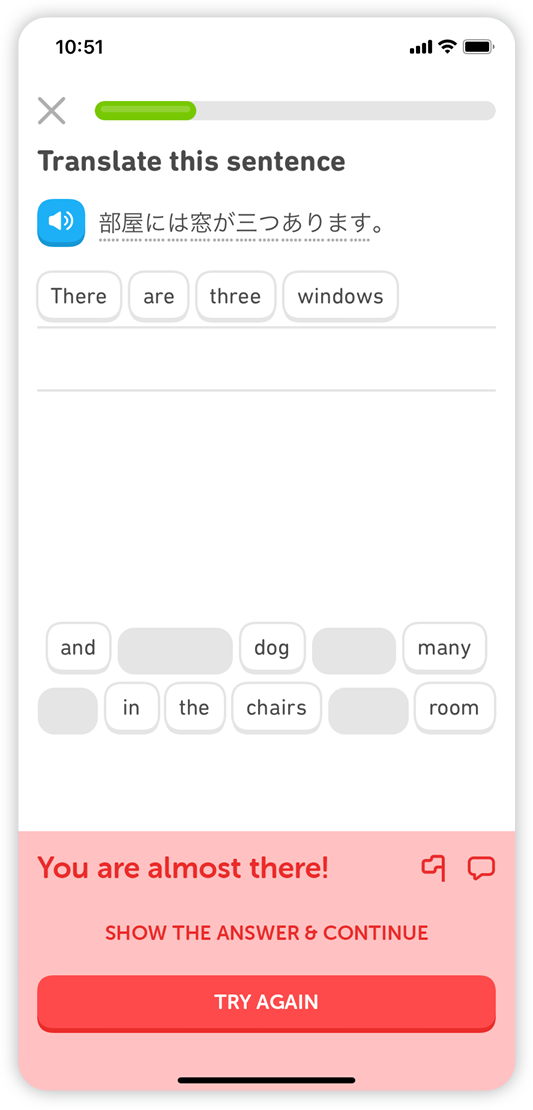
The error screen uses motivational language to encourage the user. The prompt simultaneously presents two actions: The primary action is to “try again” infinitely by returning to the question for self-correction until the answer is correct. The secondary action is to display the correct answer when the user is stuck, and to move on to the next question; in this scenario, the user
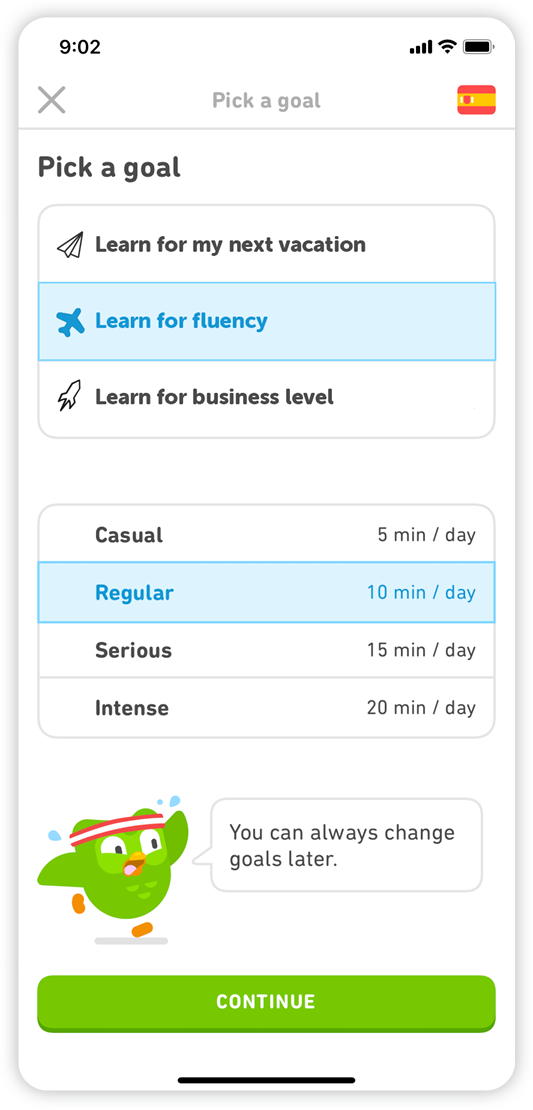
Introducing new goal options to better acclimate users to three different levels of difficulty: (1) Learning for travel/tourism, (2) Learning to become a fluent speaker, (3) Learning for a business proficiency. The user remains in full control and can change the goal at any time, just like their

A motivational aspect within the notification system can help to keep such users actively engaged to keep going while enforcing the rules of

Duolingo should get users started on tracing and writing lessons for east-Asian languages, which will enhance their learning experiences and word memorization by leveraging the touch screen of the mobile device used. In addition, Duolingo should offer keyboard introductory classes for languages, such as Korean, Japanese,
Match triplets instead of twins when learning languages with different writing systems. In the example above, the user has to match the Kanji (子供) with the Hiragana (こども) and, as a new addition, the English
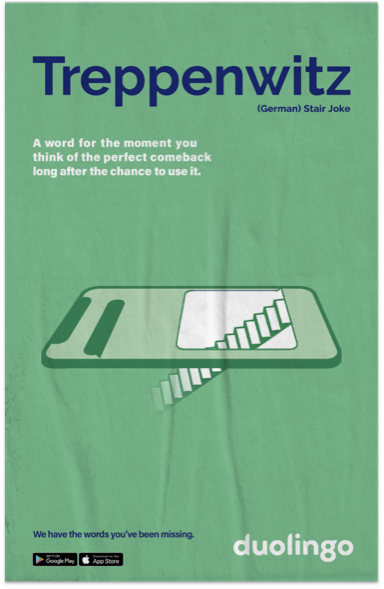
Treppenwitz. A a word for the moment you think of a perfect comeback long after the chance to
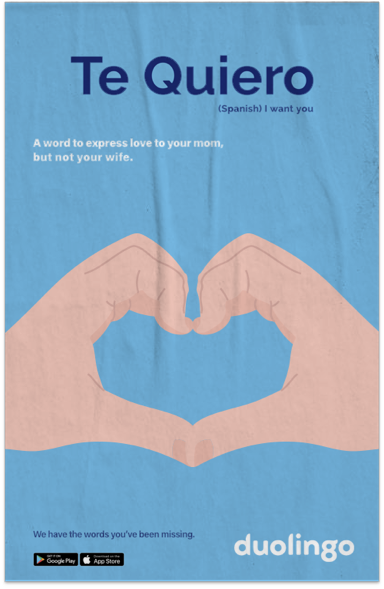
Te Quiero. A word to express love to your mom, but not
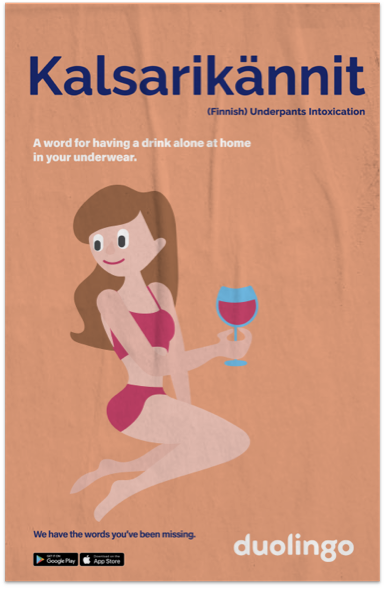
Kalsarikännit. A word for having a drink alone at home in
Team:
Julian Brueggemann
UX Design, UX Researcher, Illustration
Brendan Mansfield
Art Director (Advertising), UX Research Assistant
Harvey Gillet
Copy Writer
References:
Catasus y Brueggemann, Julian. “Duolingo-Stepping Stones of Gamified Language Learning.” Medium, 18.10.2020 
Please note: This is a classroom project purely for educational purposes and I do not claim any textual information
Last Updated: October 18, 2020
Over the years, the American Museum of Natural History (NYC) grew significantly. As a result, navigation became more complicated
